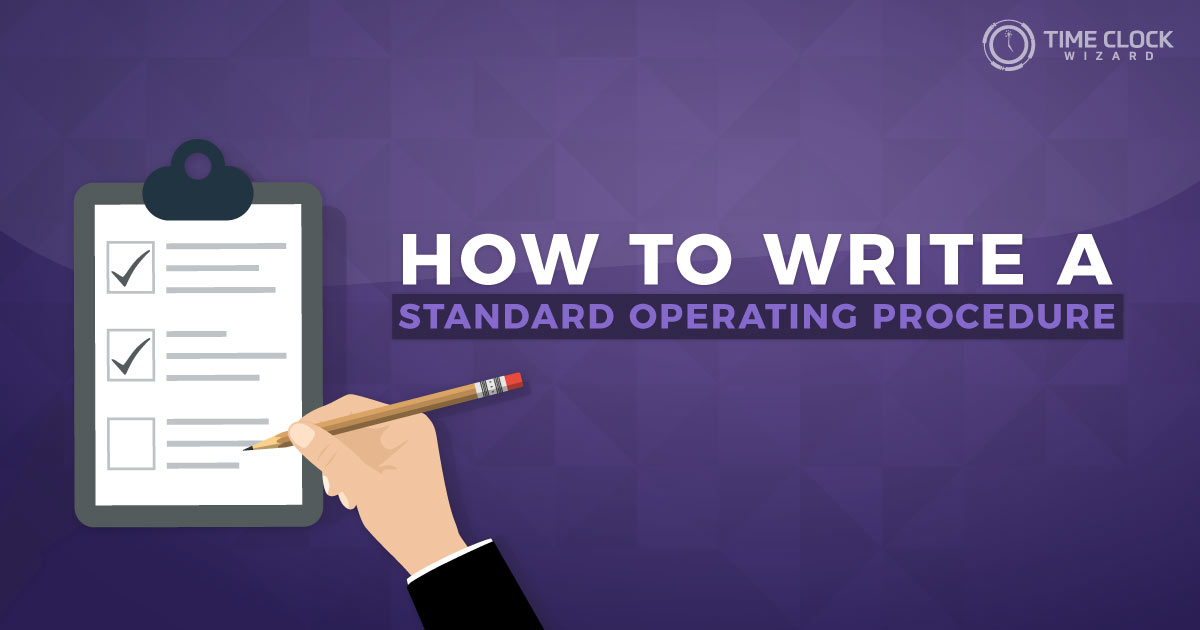
What SOP Stands For
The brain is a complex and strange tool. When you read the acronym “SOP” the brain wants to translate it as ‘soap.’ There’s a bit of irony involved here. Like soap, a Standard Operating Procedure helps clean up a business. An SOP is a step by step guide on how an employee’s work process should run. Without soap, a shower doesn’t really get you clean. This is because it’s missing one of its most important tools. Similarly, if there is no SOP in place then there is no cleanliness to a job and no order. Once you understand Standard Operating Procedures in this way, their benefits become obvious.
Standard Operating Procedures are in place for specific and detailed guides or guidelines for an employee. Almost every organization or workplace has compiled step by step instructions on how to carry out routine tasks. These step by step instructions are the SOP.
The Purpose Of Standard Operating Procedures
Imagine a place or business that has no instructions written down on how to handle anything. Let’s pretend you buy a new tablet. After purchasing the new tablet, 3 days later it stops working. You go back to the store where you bought it and the employee working that day is new and maybe has not been trained on handling returns or broken items. Without having any Standard Operating Procedures written down that employee would have no idea how to handle the situation.
Now the argument here may be that with good training practices, people should not have to look to written SOP in order to figure out how to handle a situation. That may be true but that is also like saying a pharmacist who has had years of schooling and training does not need written instructions on hand how to handle situations with filling particular prescriptions. Or saying that a doctor who has had years of training and schooling doesn’t need written instructions on anything.
Standard Operating Procedures should be simplified and brief, never hard to understand and concise while remembering not to use vague words. They could be written in an outline, numbered or in a flow chart. If employees are following these step by step instructions the employer can ensure that they are getting consistent and predictable work from everyone.
Standard Operating Procedures also make sure that safety and efficiency are being met in all areas and departments. Standard Operating Procedures are key to a successful business. And while an SOP might involve a bit of a learning curve, the benefits outweigh any negatives. It’s difficult to understand why an employer wouldn’t use an SOP in the first place.
Benefits of Standard Operating Procedures
Some employers believe that Standard Operating Procedures are not necessary. However, these written SOP can be used for the basis of staff training as well as protection because they are written down. Being able to write efficient SOP can take some guidance and/or creativity. Standard Operating Procedures should be regularly checked and updated. It is common practice for them to be updated at least yearly to keep up with whatever regulations or standards are in any given industry. Here are a list of the benefits of Standard Operating Procedures.
Save Time and Money
Having tasks or goals that need to be completed by various employees should be done in a certain way. If the same task is completed differently the employee could be costing the business time and money. Making sure goals are kept on task and done exactly the same way every time saves everyone involved time and most importantly the business money.
Simplifying Performance Management
Managers can very simply use SOP as a guide and framework to use to judge their employees. It helps employees know exactly what is expected of them from management and ensures they are meeting their time requirements and efficiency from their managers.
Employee Accountability
While Standard Operating Procedures help managers, they also help to hold the employees accountable. By knowing what they are to be living up to as an employee it helps them to strive for doing a better job as well as knowing how their work is being measured. It gives them tangible evidence to see how they are doing and understanding they are not being held accountable by just someone’s opinion.
Improved Consistency and Communication
With SOP it does not matter what employee is doing a particular job, having written instructions will ensure that each job is being done the same way. The communication will improve because no longer will employees be guessing or using communication poorly to try and figure out how to complete a task, it will be able to be done effectively with less communication time.
Avoid Knowledge Loss
There are a lot of times employers have an employee that has been at a particular company forever and knows everything there is to know about policy and procedures. Employers trust that person will be around to relay that information to other employees. A lot of times no one thinks about what happens if that particular employee no longer works at the company. By ensuring that everything is written down in SOP then companies can make sure they will not lose knowledge even if they lose their best employee.
Providing Safe Working Environments
Not only to Standard Operating Procedures improve the efficiency and consistency of a business, they also can help to prevent liability for a company. By making sure that everything is being done correctly, operations can be done safely and effectively.
How To Write A Standard Operating Procedure
Hopefully, the benefits of Standard Operating Procedures are clear by now. Next, we’ll look at how to begin writing an SOP. Writing an SOP takes a good deal of planning and preparation before you begin writing. Fortunately, there are a few simple steps you can take to make it go smoothly.
1.Gather Information
Before you get started it is important to gather as much information as possible. Talk to as many people within your organization whether they be stockholders or employees. It is important to write down as much information as possible and be as detailed as possible. If you have all the information you are more likely to get a clear understanding of how processes around the company operate.
2. Plan the Process and Format
During this step, you are going to plan or outline how you want your SOP to look like. As described before, Standard Operating Procedures can be written in many different formats. Planning the process out first before you begin writing is key. You can have a step by step guide or a workflow chart, it really is up to whoever is in charge to make the decision of how they want it done.
3. Start Writing
Remember this is only a draft at this point. It is important to first get done the details of the operation and procedure. This is not the time to worry about wording but is the time to worry about the details. Make sure all the details are being included so you can have all the steps necessary.
4. Review the First Draft of SOP
This is the time to get all hands on deck. Review the draft with employees and managers. Make sure that all the details are there and no steps have been overlooked. Have employees mimic the exact way procedures are written to ensure that things have been written out properly
5. Maintain the Process
Now that your SOP has been written it is time to make sure that the information and procedures are being maintained! Writing out step by step guidelines are useless if your employees are not following them. Make sure that everyone in the company reviews the final copy of the SOP and make sure it is being followed.
Don’t Miss Out On The Benefits of Standard Operating Procedures
SOP or Standard Operating Procedures are the easy-to-follow instructions on how to perform routine tasks within an organization. Standard Operating Procedures focus on how things are done within a company not necessarily what needs to be done. An SOP is an effective and necessary tool for organizations to have. The benefits of having Standard Operating Procedures in place are clearly seen. Standard Operating Procedures are always precise and clearly written so everyone can understand them evidently. The benefits are saving time and money, simplifying management performance, holding employees accountable, improving consistency and communication, protecting from knowledge loss and creating safe working environments.
Writing Standard Operating Procedures can be done in a step by step matter. Businesses sometimes display their Standard Operating Procedures for their employees to clearly see. Other times businesses may use various apps or written manuals for their employees to reference. There are tools and people available to help with completing effective Standard Operating Procedures for your business.
Give your employees clear standards and they’ll deliver consistently efficient work. Write out your Standard Operating Procedures and the time spent will be an investment that yields ample returns. Read more about how to find the right employees and how they achieve work life balance.







